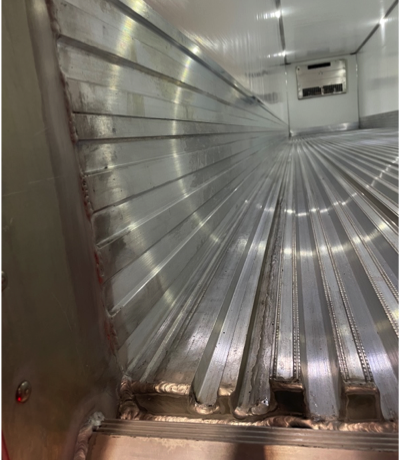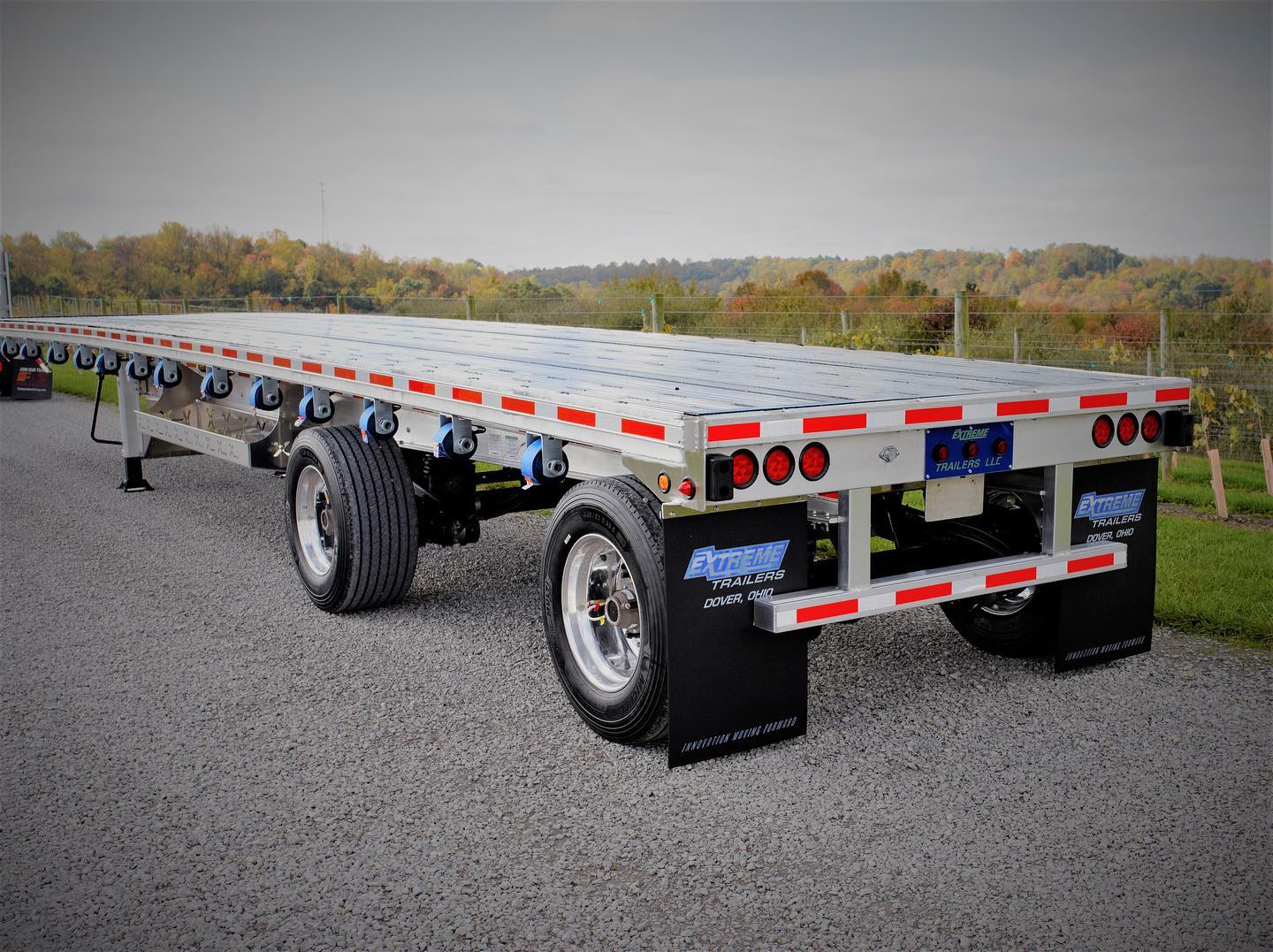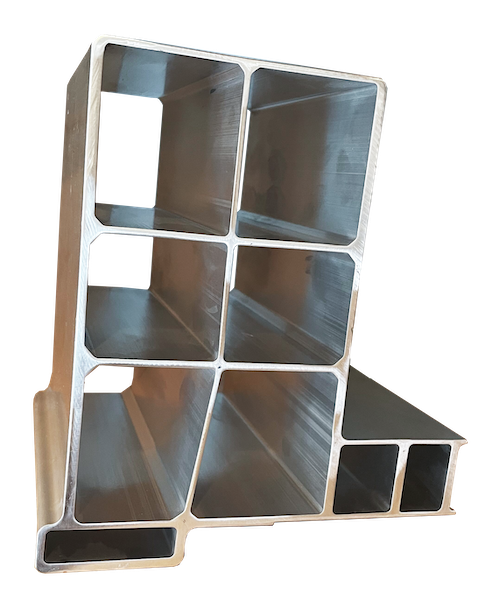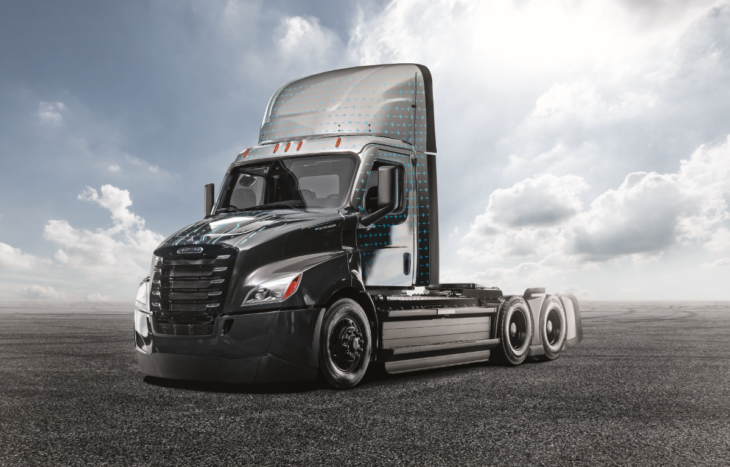By Andrew Halonen, Mayflower Consulting LLC.
Commercial vehicles have one key difference from passenger cars. They are a tool to do work and are, therefore, specified and built with a certain application in mind, which is often referred to as the duty cycle. Maintenance of the commercial vehicle is necessary, yet downtime to fix the vehicle is highly undesirable. In many cases, a fleet will test a product for a year before they are confident that the product is ready for its fleet of vehicles. So, the material selection on commercial vehicles must include durability and maintenance as considerations.
Aluminum extrusions are a proven technology, as they are very popular on a wide variety of commercial vehicles — from Class 8 tractors and trailers to delivery vans and utility vehicles. The diversity of vehicles that use aluminum extrusions validates the value proposition of extrusions in regards to lightweighting, corrosion resistance, maintenance, ease of integration, and structural efficiency.
One example is Knapheide, a company that manufactures custom truck bodies. The company recently released new aluminum utility bodies for multiple vehicles, stating that “the heavy-duty, lightweight aluminum used is durable and resists corrosion, while also leading to a reduction in body weight of an average of 35% compared to a steel counterpart.”1-2
Extrusions in Commercial Vehicles
Class 8 Tractors and Trailers
Class 8 semi-trucks are also known as tractors, which originates from the Latin word trahere, meaning “to pull.” The sales volume of tractors per year pales in comparison to the general automotive market for cars, SUVs, and light duty trucks. For example, the Toyota RAV4 model alone had higher sales (399,941) in 2022 than the entire Class 8 truck market, which sold a total of 309,615 tractors.3-4
Another difference from the automotive market is the availability of information about the materials used. Cars are often disassembled by benchmarking firms in order to analyze the internal components and materials used, and this information is made publicly available. On the other hand, there is no known company that does the same sort of benchmarking in the commercial trucking sector, and if there is, the data is not published. Commercial truck OEMs very sparingly share the material make-up of their trucks. It is known that there are some extrusions in tractors, such as small mounting brackets, yet these parts are not often visible. The most prominent extrusion on a commercial truck is the side protection beam on the eCascadia electric tractor (Figure 1). It is possible that Freightliner was inspired to use an extruded profile on its electric tractor based on the automotive industry’s use of extruded rockers for vehicle crash safety and battery protection.

Contrary to tractors, the commercial trailer OEMs are very open about sharing the bill of materials for their trailers. Extrusions can be found literally all around in various trailer designs, whether they are of an enclosed or flatbed type. The front of the trailers tend to use extrusions as corner beams, and the walls are generally manufactured in a standard post and sheet construction. Other areas that use extrusions are the floor, side wear band, cross-members beneath the floor, landing gear, and doors and hinges. If there is a ramp, extruded materials lighten the ramp’s weight for ease of handling and can also incorporate slip resistant grip features into their profile design to prevent accidents. Additional examples of extruded systems can be found on the truck and trailer page of the Aluminum Extruders Council website.5
At the Technology and Maintenance Council’s 2023 Transportation Technology Meeting and Exhibition, trailer manufacturers were surveyed about their usage of extrusions. Most OEMs pointed to lightweighting as the primary value. An example is the cross members below the floor, such as a weight-sensitive refrigerated trailer (referred to as a “reefer”), in which the cross members are extruded aluminum. For a typical dry van that is not often weight-sensitive, the cross members are stamped steel. For a trailer that contains many cross members, the difference between aluminum and steel is substantial, yet the cost is as well.
The reefer trailer construction requires the typical structural and durability standards. However, it also has requirements for thermal management, mold, and moisture. As a result, aluminum is often selected in place of wood for the flooring (Figure 2), because it will not mold or absorb moisture and is easier to clean.

Within an enclosed trailer, there are often load securement systems, such as those from Ancra Cargo,6-7 which use extrusions on slide mechanisms and the beams. In this case, extrusions have the ability to provide specific geometries that make it easy for users to adjust the location of the securement devices. In addition, the low density of the aluminum minimizes the weight penalty.
Flatbed trailers also use a lot of extrusions — no more so than the trailer manufactured by Extreme Trailers, LLC (Figure 3). Extrusions are used throughout the flatbed trailer, including a large, strong extruded beam (produced by Pennex Aluminum) down the center of the platform to support the load. Extreme Trailers is not shy about the value proposition that the all-aluminum trailer provides, stating that the trailer is “up to 1,800 lbs lighter and up to 50% stronger for extreme profits.”8

Utility and Work Trucks
The Work Truck Show is an interesting event to attend, because so many variations of work utility and work trucks are on display, highlighting the various ways in which each one is customized to meet a user’s needs. Most work truck beds are built with drawers and enclosures full of tools and materials, all designed to meet the specific requirements of the job. Extrusions are great for these systems because they are lightweight, durable, don’t rust, and most importantly are easy to customize with tight geometrical tolerances.
Lightweighting is a key attribute to extrusions in work trucks, too. DuraMag®, part of the Shyft Group, has a line of lawn care trucks that incorporate 6000 series extrusions on the corner posts, headboard, and floor structure. These trucks boast a 45% lower weight than a steel bed design.9 While one might expect the aluminum dump bed to have reduced durability to steel, DuraMag proves this otherwise. The company has demonstrated that sand, gravel, and even large rocks can be dropped from an end loader into the truck, without damage to the truck bed.10
Truck bodies are not the only products that capitalize on extrusions in the work truck market. Stellar introduced an extruded aluminum crane that is 30% lighter than the steel product. The lightweight extended boom has two benefits: increased payload on the vehicle and less energy required to move the boom during operation.11 Of course, the corrosion resistance of aluminum also translates to lower maintenance and long-term durability.
Delivery Vans

A carryover from automotive design to commercial vehicles is the multi-hollow rocker structures for electric delivery trucks. Extruded rockers are common now on light duty electric vehicles, as a separate component, or as a battery box surround.12 Figure 4 shows a section of an extruded rocker used on an electric delivery van. The rocker structure is critical to absorb crash energy to protect the passenger compartment. In electric vehicles, it is used to protect the battery system as well.
The Shyft Group manufactures Blue Arc, an electric delivery van with a lightweight aluminum and composite body. The vehicle also includes aluminum honeycomb shelving in the cargo area. Surprisingly, Shyft is only one of a few electric delivery van manufacturers that boast of lightweighting as a company initiative.
Material Selection in Commercial Trucking
The majority of the structural extruded products in ground transportation, trucks, and cars utilize 6000 series alloys. In commercial vehicles, most products highlight the use of 6061-T6, because of its all-around performance, ease of fabrication and welding, and general corrosion performance. Better corrosion performance was noted for 6063 alloys, and better extrudability in 6005A. However, after speaking with a number of commercial trailer engineers, it was clear that 6061 was preferred. This is likely due to its commercial availability, which is a major consideration as the trailer market is very cost competitive.
There are many references in trucking to advanced high strength steels being used in various components, from frame rails to the body structure. Most frame rails are 120 ksi (827 Mpa), yet 160 ksi (1,100 Mpa) rails are now available. On the other hand, there is no known use of 7000 series aluminum sheet or extrusions being used to provide similar high strength, while cutting additional weight. The reason is likely due to the cost and value of 7000 series aluminum, along with limited supply.
Fuel efficiency alone is not a motivating factor for commercial OEMs to focus on lightweighting. It takes about 2,000 lbs (907 kg) of weight reduction to cut fuel by 1%. With such little benefit in terms of fuel economy, lightweighting initiatives are motivated by the ability to carry more goods on each trip. This concept is explored more deeply in an objective study on Class 8 tractor and trailer lightweighting, published by the North American Council for Freight Efficiency.13
Moving forward, the trucking market is seeking alternative propulsion solutions to reduce diesel fuel usage or even avoid it completely. Electrification activities are in full swing, yet are facing significant hurdles as the charging levels are high and the infrastructure is non-existent. Battery electric Class 8 tractors are about 5,000 lbs (2,268 kg) heavier than diesel counterparts. Even in trailers, there are a couple of solutions in development that could capture energy from the trailer axle to store and power the refrigeration unit. This adds weight to the trailer, on the order of hundreds of pounds, which could spur more lightweighting efforts. The trucking market will continue to innovate as already seen with load stabilizers and lifting booms, and aluminum extrusions are proven as a low risk, cost competitive, and durable material to achieve lightweighting and performance goals.
References
- “Knapheide introduces aluminum utility bodies for multiple applications,” Trailer Body Builders, February 2023, p. 44.
- Knapheide website.
- Wayland, Michael, “Tesla breaks into America’s bestselling cars list for 2022, but trucks still dominate,” CNBC, January 7, 2023.
- Lovrak, Tess, “Class 8 truck sales top 309k in 2022,” Fleet Equipment Magazine, February 7, 2023.
- “The Truck/Trailer Solution,” Aluminum Extruders Council.
- “Low Profile Vers-A-Deck Decking/Shoring Beam,” Ancra Cargo.
- In person conversation with Ancra Cargo at TMC 2023, which provided the author with informed on use of aluminum extrusions.
- Extreme Trailers website.
- “Smooth-Sided Landscape Bodies,” DuraMag.
- “Proven: The Toughest Dump Body in its class in America!” (video), DuraMag.
- “Stellar introduces aluminum crane for mechanics trucks,” Trailer Body Builders, March 6, 2019.
- “Battery Box: Success Stories,” Aluminum Extruders Council.
- “Confidence Report: Lightweighting 2021,” NACFE, February 2021.
 Andrew Halonen is president of Mayflower Consulting, LLC, a lightweighting consultancy that provides strategic marketing, market research, and business development for high tech clients. Halonen works with castings, extrusions, brakes, and new material development programs, and is a guest writer for Light Metal Age. Contact him at: www.lightweighting.co.
Andrew Halonen is president of Mayflower Consulting, LLC, a lightweighting consultancy that provides strategic marketing, market research, and business development for high tech clients. Halonen works with castings, extrusions, brakes, and new material development programs, and is a guest writer for Light Metal Age. Contact him at: www.lightweighting.co.
Editor’s Note: This article first appeared in the April 2023 issue of Light Metal Age. To receive the current issue, please subscribe.

